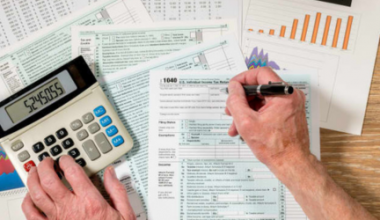As the saying goes, “Writing a letter is one thing; writing professionally is quite another.” And that’s where a professional letter comes in. A professional letter is a formal letter that you can use to request or provide information. When it comes to writing a professional letter, It is important to know how to write a professional letter to communicate effectively with businesses and other organizations, regardless of its purpose, resignation, reference, recommendation, or complaint.
However, if you’re looking for tips on how to write a professional letter, you’ve come to the right place. In this article, we explain how to write a professional letter and other tips that will make your letters stand out.
What Is A Professional Letter?
A professional letter is a business letter typically used to communicate with other businesses or individuals to request or provide information. It is usually in a formal, professional tone and style. This can be a letter you write to your potential employer, client, co-worker, or business associate.
Professional letters usually come with a specific purpose or intention, including a salutation, body paragraphs, and a closing. The letter should be well-written and free of any grammar or spelling errors. They should also be clear and concise and get straight to the point. So, when you want to write a professional letter, be mindful of the recipient and tailor the letter accordingly.
Types Of Professional Letters
There are many types of professional letters and each has its purpose, but some of the most common include:
#1. Cover Letters:
Cover letters are used when applying for a job or submitting a proposal or application to a potential client. To write a professional cover letter, you should focus on the position and let your words convince the company or employer you’re the right candidate.
#2. Letter Of Recommendation:
A letter of recommendation is a professional letter written to provide a positive review of a person’s skills or character. It is a letter in which someone who knows you well writes about your positive qualities. The letter is often used in the hiring process, as it can provide valuable information about a candidate’s qualifications.
A letter of recommendation contains positive remarks and can help obtain scholarships, jobs, or internships. In addition, a professional letter of recommendation can be a valuable asset when applying for scholarships, jobs, or internships. For instance, if you want to obtain a job or scholarship, you need someone to write a professional recommendation letter. All you need to do is to provide the person writing the letter with all the necessary information and show appreciation for their time.
#3. Letter Of Reference:
A letter of reference is a letter someone who knows a job candidate, writes and attests to his/her qualifications. It can come from a previous employer, a colleague, a professor, or a professional organization. Your potential employer can request this letter as part of the hiring process.
In other words, the letter should be positive and provide specific examples of the candidate’s qualifications. For example, if you want to write a professional letter of reference, address it to the person, the job he/she is applying for, and sign it.
#4. Letter Of Complaint:
A letter of complaint is a formal letter used to complain about a product, service, or situation. The letter should be addressed to the company, organization, or individual responsible.
Therefore, if you want to write a professional letter of complaint, include all relevant information, such as the date, time, and place of the incident, as well as a detailed description of the problem, politely and professionally.
#5. Letter Of Resignation:
A letter of resignation is a formal document from an employee to their employer to announce their intention to leave their position. To write a professional letter of resignation, you should include your employee’s name, position, company name, and the date of your last day of work.
In the letter, the employee should also mention their reasons for resigning and thank their employer for the opportunity to work for them.
#6. Thank You Letters:
Thank you letters are sent after an interview or meeting to show appreciation for the opportunity. They are also for general appreciation to colleagues, employers, customers, business partners, etc.
How To Write A Professional Letter
Here’s a general guide on how to write a professional letter, regardless of resignation, reference, recommendation, or complaint letter.
#1. Use A Letter Font And Margins:
When you want to give a professional impression in your written correspondence, start with the basics: a quality letter font and margins. This will give your letter a polished and formal look. To choose a font, look for something that is easy to read and has a professional appearance. For example, Times New Roman is a good choice. Then, set the margins to one inch on all sides to give your letter a clean and streamlined appearance.
#2. Create Your Heading:
The heading of a professional letter should include the sender’s name and address, the date, and the recipient’s name and address. To write a professional letter heading:
- First, you should write your name, address, and date at the top right-hand corner of the page. You can also add your phone number and email address.
- After that, add the recipient’s address information beneath yours, and align them to the left. This will help to ensure your letter is addressed to the correct person or department.
#3. Write Your Salutation:
The salutation is the formal greeting at the beginning of your letter. So beneath the heading, include a salutation or greeting, and add a comma. If you know the recipient’s first and last name, you can write “Dear John Smith.” And if you do not know the recipient’s name, use a generic salutation such as “Dear Sir or Madam,” “To Whom It May Concern,” or “Dear Hiring Manager.”
#4. The Body Paragraphs:
A professional letter typically contains three body paragraphs. You can write a professional letter body these ways: The first paragraph introduces the purpose of the letter. The second paragraph provides more information about the purpose and the third paragraph asks the reader to take action. Hence, make sure these body paragraphs are clear and concise.
#5. Add Closing Body Paragraph And Signature:
Most letters end with a brief paragraph thanking the recipient for their time and letting them know you will be in touch. This is a good opportunity to sign off with a positive statement or phrase. For example: “I look forward to hearing from you soon.” or “Thank you for your consideration.” If you have included enclosures with your letter, mention this here as well. For example: “Please find enclosed a copy of my resume.”
After the closing body, leave two to three lines between the closing line and add a closing signature. Examples of letter signatures are “Sincerely”, “With appreciation”, “Thank you”, “Regards”, “Yours truly”, etc. So, select your closing signature and input your first, middle initial (if you have one), and last name. Note that the closing signature and your name should be at the bottom left-hand side.
#6. Proofread And Send Your Letter
After you have written your letter, take the time to proofread it. Checking for grammar and spelling errors is a must, but also take the time to read your letter to ensure it is clear and concise. After that, you can send it to the recipient.
What Is Included In A Professional Letter?
A professional letter typically includes a heading with the sender’s name and address, as well as the date and recipient’s name and address. The body of the letter is where the sender will communicate the purpose of the letter. It should be clear and concise, and always close with a professional sign-off, such as “Sincerely” or “Best Regards.”
How Do You Start A Formal Letter?
The traditional way to start a formal letter is with the salutation “Dear Mr./Mrs./Ms. Last Name.” However, if you do not know the person’s last name, you can use a general salutation, such as “Dear Sir or Madam.” And if you know the person, you may use their first name.
How Do You Start A Professional Letter Without Dear?
You can start a professional letter in many ways without using “dear.” Some alternatives include “to whom it may concern,” “hello,” or simply using the recipient’s name. However, choose a greeting that is appropriate for the relationship you have with the recipient.
For example, “to whom it may concern” is appropriate for a letter where you do not know the recipient well, while “hello” or the recipient’s name would be more appropriate for a letter to someone you are familiar with. See a sample below.
To Whom It May Concern
Subject: Request for Assistance
Dear [Name]
I hope this email finds you well. I’m writing to request your assistance with a matter that I believe is of great importance to me.
I am writing to request that you review the attached document and provide your feedback. I would greatly appreciate your input, as I am confident that your expertise will be invaluable in resolving this issue.
Thank you for your time and consideration.
Sincerely,
[Your Name]How Do You Start A Professional Greeting Letter Sample?
You can start a professional greeting letter this way:
Dear Sir/Madam,
Thank you for your email. I am sorry to hear that you are having difficulty with your current job. I would be happy to speak with you further about your situation. Please let me know if there is a time that would be convenient for you.
Sincerely,
Your Name.
How Should A Professional Letter Be Formatted?
A professional letter should be formatted with a letterhead at the top of the page, followed by the date, recipient’s name and address, and a salutation. Then, the body of the letter should be single-spaced, with a space between each paragraph. The letter should also be signed at the bottom, followed by the sender’s name and contact information.
Conclusion
A professional letter communicates to different audiences for different purposes. While the format varies on the audience and purpose, the above general tips and guidelines can help you write a professional letter that will make a positive impression and achieve the desired results. In addition, remember the letter should be clear, concise, and error-free.






